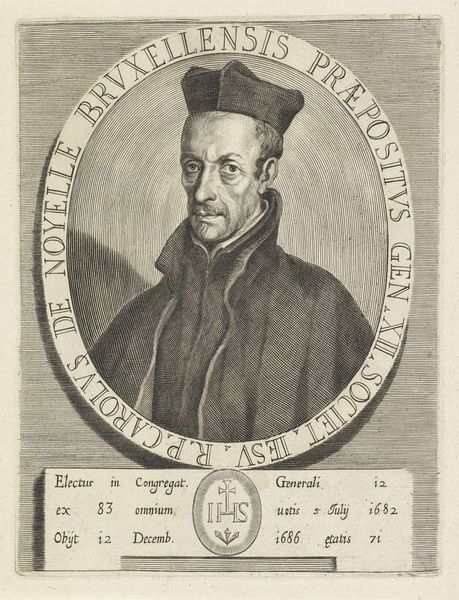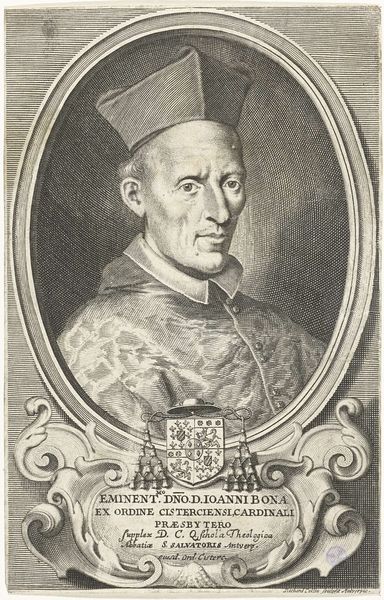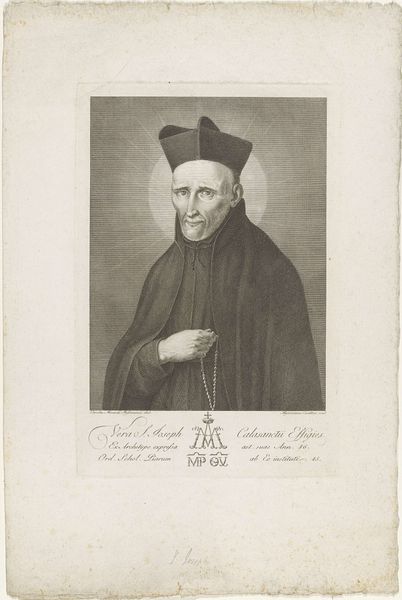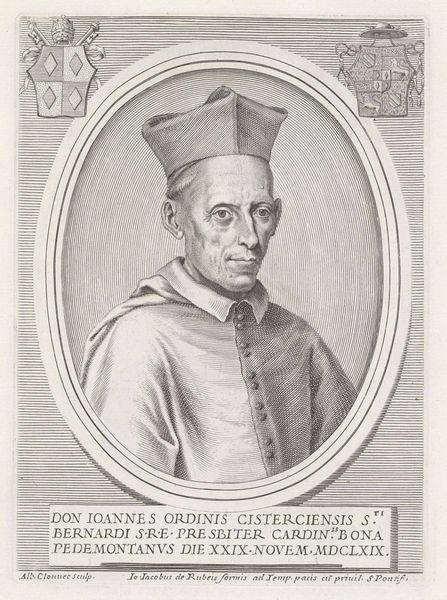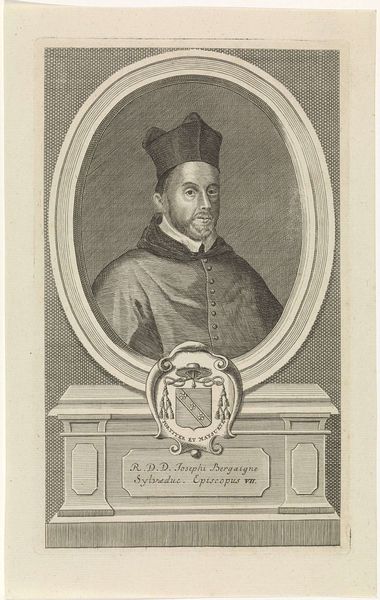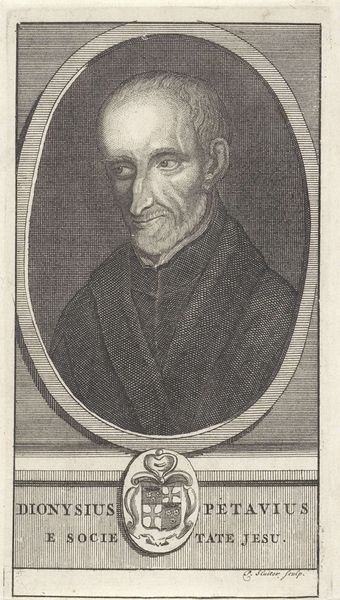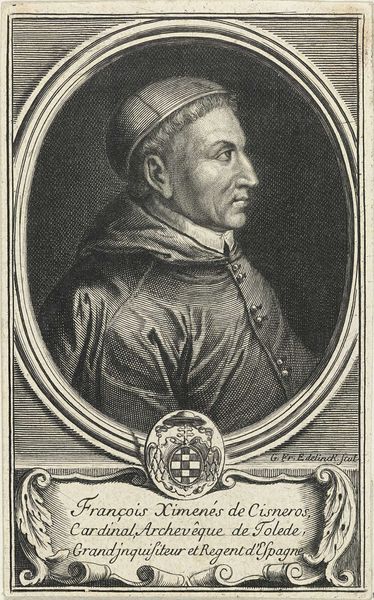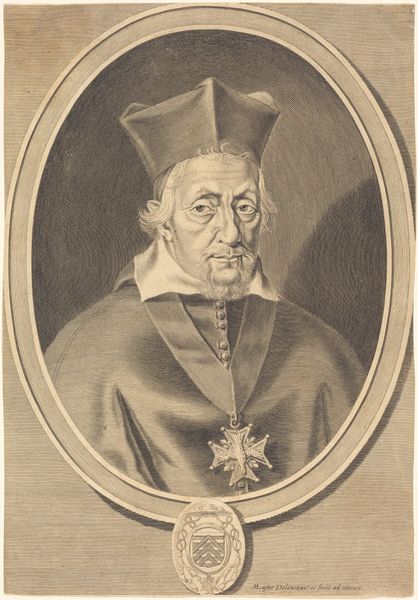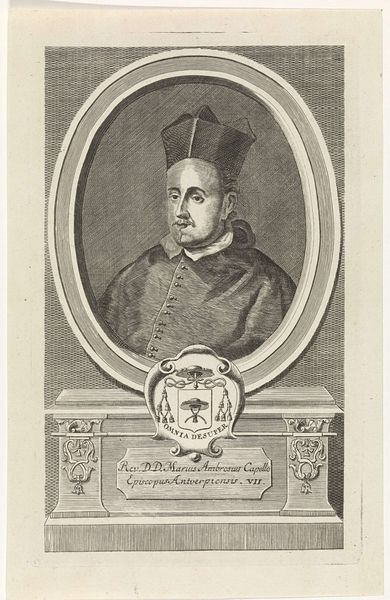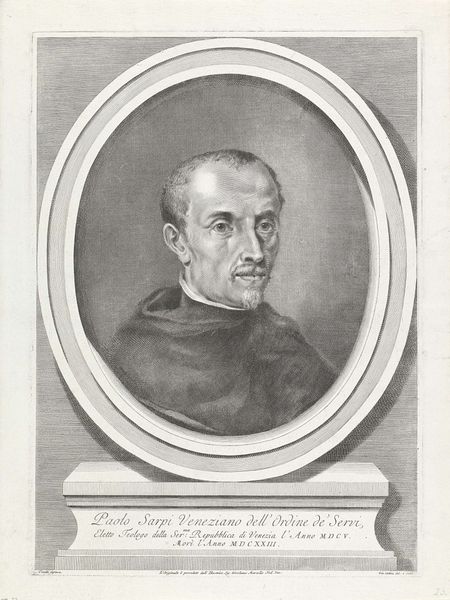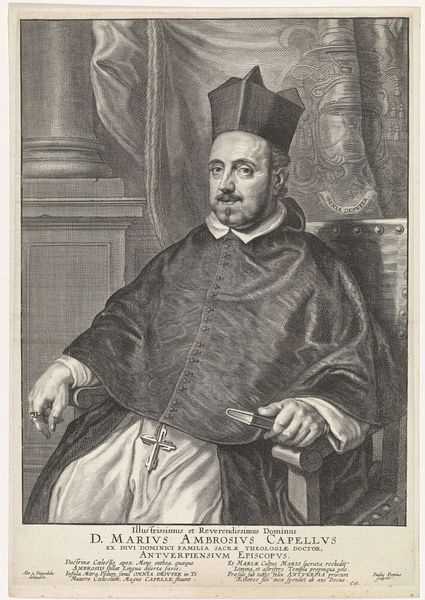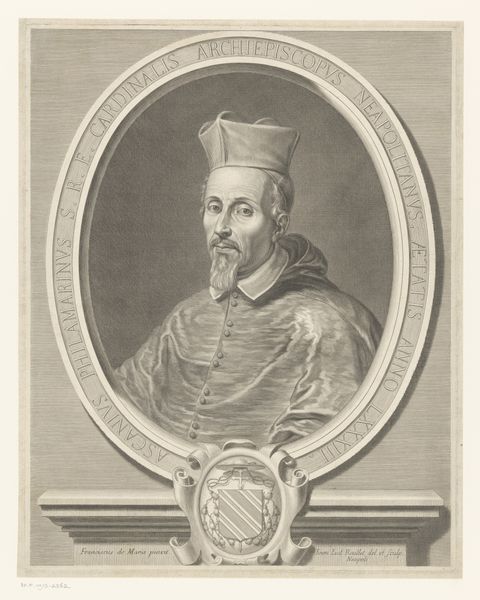
engraving
#
portrait
#
medieval
#
baroque
#
old engraving style
#
islamic-art
#
history-painting
#
engraving
Dimensions: height 200 mm, width 150 mm
Copyright: Rijks Museum: Open Domain
Curator: Before us we have a striking engraving from 1731 titled "Portret van de jezuïet Michelangelo Tamburini" by Arnold van Westerhout. Editor: It's incredible how much detail he packs in! The figure seems austere, contained, and… somewhat melancholic, trapped within those etched lines. Curator: Indeed. Van Westerhout really showcased his skill. The precision of the lines—etched into a metal plate, of course, then printed onto paper—allows for such subtle rendering of Tamburini’s features and clothing. I wonder about the labor that went into this level of detail and repetition for distribution. Editor: You're right, I was struck immediately by that. Look at the man's face – it carries the weight of the Church. But the texture— the paper itself, the ink, and then, you have that inscription below mentioning the Societas Jesu, or the Society of Jesus, elected in January of 1706... There’s this inherent tension between the subject's importance and how the artwork communicates it, materially. How the portrait commemorates Tamburini but also functions, essentially, as propaganda for a Catholic order at that time? Curator: I find the oval frame so fascinating, too. It encircles Tamburini’s image, placing him in a kind of hallowed space, apart from the mundane. And consider the script itself, notice that calligraphic flair around the title... The very act of engraving his name solidifies his place in history. This wasn't just any Jesuit. This was Michelangelo Tamburini. It transforms him into an icon. Editor: It also highlights that Baroque love for decoration even in what is at its core an austere piece. Think about where this image would have been seen, too: within Jesuit communities. This engraving performs specific functions, it provides both documentation and decoration of Tamburini’s leadership role, through artistry and mechanical means of reproduction that both honor and extend the institution’s presence through materials, ink and paper! Curator: Beautifully stated. You've truly opened my eyes to see not just the aesthetic beauty of this piece, but its material and social role. Editor: Likewise, your point about the engraving turning the subject into an icon has altered my perception, making me appreciate its aesthetic purpose.
Comments
No comments
Be the first to comment and join the conversation on the ultimate creative platform.
